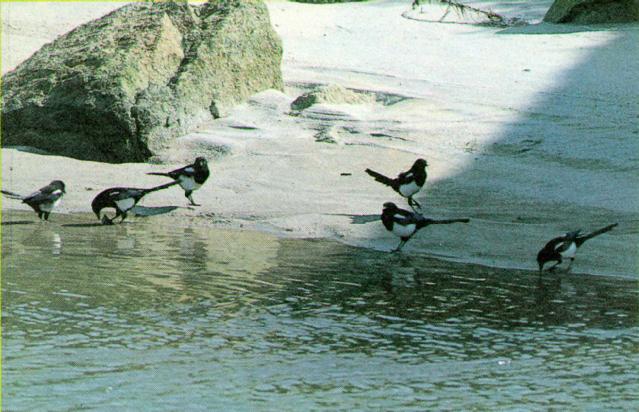|
| Query: bird | Result: 3311th of 32675 | |
Korean Bird: Black-billed Magpie J08 - Summer - flock on water bank
| Subject: | Korean Bird: Black-billed Magpie J08 - Summer - flock on water bank
| | Poster: | Kim Jinsuk (jskim@bulls.kordic.re.kr)
| |

| File size : 55388 bytes
File date : 1998:06:01 09:00:00
Resolution: 639x412
Jpeg process : Baseline
Posted Newsgroups: alt.binaries.pictures.animals,han.binaries.photo
Posted Date: Tue, 02 Jun 1998 17:20:28 +0900 |
Korean Bird: Black-billed Magpie J08 - Summer - flock on water bank
Black-billed Magpie (까치)
Pica pica
Scanned from a magazine for children "Kachi"(Mar. 1994),
which means black-billed magpie in Korean.
Enjoy it.
|
Comments |
|---|
| | Guest |
|
| Korean Magpie Pica pica sericea is currently considered a subspecies of the European Magpie found in East Asia. It is a common symbol of the Korean identity, and has been adopted as the "official bird" of numerous South Korean cities, counties and provinces. Compared to the European Magpie, it has a markedly shorter tail and a longer wing in relation to each other, and the back and tail show strong purple and hardly any green iridescence. |
^o^
Animal Pictures Archive for smart phones
^o^
|
|
|

